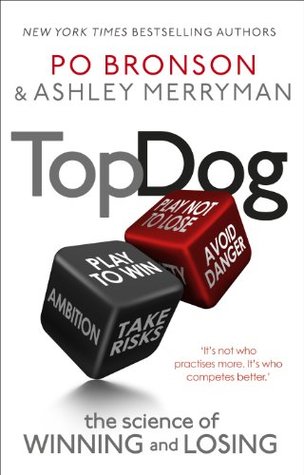More on this book
Kindle Notes & Highlights
Read between
March 28 - April 23, 2020
males do spend most of their lives in groups.
Females, on the other hand, spend most of their time in pairs.
the group takes on a collective identity; it provides everyone with a unified sense of purpose.
within a group, people will have different experiences, abilities, resources.
Self-assertiveness is the natural communication style of groups.
groups allow people to argue.
In a group of people, a number of competing ideas can be expressed, without an accompanying sense of confrontation.
If there is a real argument between group members, someone else can step in as the neutral mediator.
groups do encourage competition in day-to-day activities, and, within those, there’s usually no real cost for losing.
There is no larger purpose to a dyadic friendship—other than the value in the friendship itself.
dyadic exchanges are less confrontational. Even paired strangers won’t express opposing views; instead, they work to find points of agreement.
dyads are inherently more fragile than group-based relationships;
the dyad must be self-policing: its members must become keenly sensitive of the other’s feelings and needs.
The natural conversational style of a dyad isn’t bragging: it’s self-deprecation.
the lesson of the dyad is that competition destroys relationships.
To protect the relationship, therefore, women may use ostracism as a preemptive first strike.
words, even in groups, the girls still played by the rules of the dyad.
younger brothers develop the risk taking and competitive psyche that they then bring to the field.
Anyone who has been around children knows how easily they withdraw from competition when they’re behind.
sibling competition serves as a training ground for competition in life.
Competitiveness seemed innate; it was cooperation that had to be socialized into a child.
the biggest mistake might be using gender in any way to count, sort, or even think about entrepreneurs.
Brain differences, combined with psychological differences, interact to forge the rare kind of risk ignorer who is competitive enough to succeed.
Risk taking is bounded by its own effectiveness. When it pays off, everyone looks like heroes; when it fails, you look stupid.
The hallmark characteristics of playing to win are an intensification of effort and continuous risk taking. The equivalent for playing not to lose is conservatism and trying to avoid costly mistakes.
having a strategy of avoiding mistakes leads, by itself, to more mistakes.
Playing to Win and Playing Not to Lose are more than just descriptive metaphors. They are diametrically opposing strategies, triggered by different psychological and physiological mechanisms.
when missing the kick will cause the kicker’s team to lose, professional kickers succeed on those shots only 62% of the time. When making the goal will result in a win, kickers go for it—and they find the net 92% of the time. It’s the same kick, the same twelve yards every time. The ball is still struck at 60 miles per hour and the goal is still a 72-square-foot target. But a 30% gap in the success rate results from the different psychological circumstances.
changing the framing of a task from threat to challenge is all it may take for success.
expectations play into this. An unexpected loss is far more upsetting than an expected loss, an expected win is far less glorious than an unexpected win.
it’s much easier to learn from mistakes—without dwelling on them—outside of a competitive context.
even watching opponents make a mistake can trigger a strong change in the brain’s voltage. Your brain processes the other person’s mistake as if it were your own.
most adult work is predicated on the expectation that employees should be thorough, careful, and mistake-free.
The kind of labor that feeds the economy requires both neural systems to be highly trained.
Creativity requires disinhibition: it requires turning off the internal censors in order to allow brainstorming and idea generation.
If we want to compete harder, if we want to show more competitive fire, that means playing to win. And that might mean having to overcome the way we’ve been trained to think:
Competitive fire will flourish when long-term goals are high, and when it’s accepted that risks and mistakes go hand-in-hand,
“Near-miss bias” is the tendency to take more risk after an event in which luck played a critical role in deciding the event’s outcome.
The conclusion: believing your luck is good works, because it boosts your confidence and optimism, which, in turn, benefits performance.
good-luck charms and rituals work because the players believe they work.
luck is no match for the power of social comparison. Nobody wants to be the one guy who can’t do well.
unequal contests, it’s valuable to strategically remind yourself of the role of luck—and even to embrace it.
students rated the managers just about as successful when they were lucky as when the managers had made good decisions. They didn’t see the mistakes being made. Instead, the near-miss bias was in full force.
reports are read, and it’s expected that the lessons learned will be put into action. Team members have to be unafraid to speak up,
those fooled into thinking they are great bullet-dodgers eventually get hit.
on an average day, 3% of all human thoughts are devoted to contemplating these near realities and alternative scenarios. They are called counterfactuals,
12% of our thoughts are devoted to self-evaluation through comparison.
Somatic anxiety is the physiological state—the faster heart rate, clammy hands, raised blood pressure, dry throat, hot face, and tense muscles.
Cognitive anxiety is the mental state—the inability to control one’s thoughts, anticipating and agonizing over problems, and the fear of disapproval.
in many studies, cognitive anxiety went hand in hand with performance.


